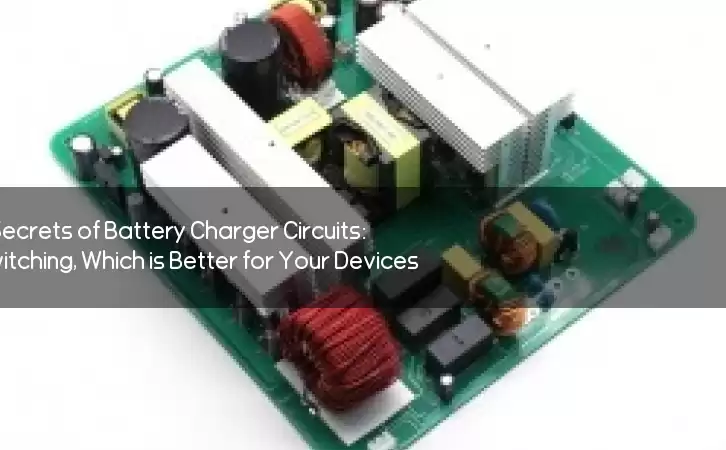Information Center
Unlocking the Secrets of Battery Charger Circuits: Linear vs Switching, Which is Better for Your Devices?
Published:2023-05-18 19:40:29 Author:Green WCND Views:75Battery Charger Circuit: An Introduction

A battery charger circuit is an electronic circuit that is used to charge or recharge batteries, such as those used in mobile phones, laptops, tablets, and other electronic devices. These circuits are designed to prevent overcharging or over-discharging of the battery and to ensure that it charges to its full capacity.

There are two main types of battery charger circuits: linear and switching. Linear chargers are simpler and less expensive, but they are less efficient than switching chargers, which can charge the battery faster and more efficiently.
In a linear battery charger circuit, the input voltage is regulated by a voltage regulator, which converts the input voltage to a constant output voltage. The output voltage is applied to the battery through a current limiting resistor, which prevents the battery from drawing too much current and becoming damaged.
The charging process is controlled by a voltage sensor, which measures the battery voltage and compares it to a reference voltage. If the battery voltage is lower than the reference voltage, the charger circuit will increase the current to the battery until the voltage reaches the reference level. Once the battery is fully charged, the charger circuit will reduce the current to the battery to avoid overcharging.
Switching battery charger circuits use a switch mode power supply (SMPS) to rapidly switch the input voltage on and off at high frequencies. This results in a more efficient charging process, as the switching circuit produces less heat and energy loss than a linear circuit. The SMPS also allows the charger to charge the battery at a higher current, which means that the battery can be charged more quickly.
Switching charger circuits use a microcontroller to monitor the charging process and make adjustments to the charging current and voltage as needed. The microcontroller can also monitor the battery temperature, which is important because charging a battery at a temperature that is too high can damage the battery.
In conclusion, a battery charger circuit is an essential component for charging and recharging batteries for your electronic devices. Whether you opt for a linear or switching circuit, it is important to choose a circuit that meets the charging requirements of your battery and the device it powers. With the proper charger circuit, you can ensure that your battery is always fully charged and ready to go!
Power Adapter Design and Customization Guide for Portable Electric KettlesI. Common Design Types for Portable Electric Kettle Power AdaptersPortable electric ke···
I. Common Design Types of Power Adapters External Independent Type (Most Common) Design: A standalone adapter (e.g., "black brick") connected to the p···
Handheld Vacuum Cleaner Power Adapter Selection GuideIntroductionHandheld vacuum cleaners have become a mainstream tool for household cleaning due to their port···
Drill Power Adapter Selection Guide.drill-container { font-family: Arial, sans-serif; line-height: 1.6; max-width: 800px; margin: 0 auto; padding: 20px; } .dril···





